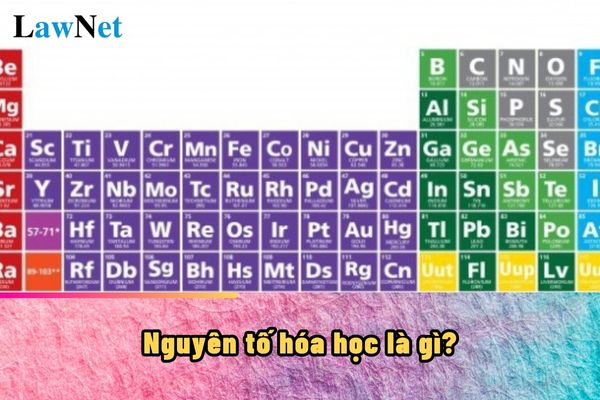What is a chemical element? When do students in Vietnam learn about chemical element?
What is a chemical element?
A chemical element is a pure chemical substance composed of a single type of atom, identified by the number of protons in its nucleus. In other words, all atoms of an element have the same number of protons.
*Examples:
Hydrogen (H): Each hydrogen atom has 1 proton.
Carbon (C): Each carbon atom has 6 protons.
Oxygen (O): Each oxygen atom has 8 protons.
*Key Features of Chemical Elements:
Atomic number: It is the number of protons in the nucleus of an atom. The atomic number determines the element's position in the periodic table.
Chemical properties: Atoms of the same element have similar chemical properties.
*Why are Chemical Elements Important?
Constitute all matter: All matter around us is composed of chemical elements.
Understand the natural world: Studying elements helps us better understand the structure and properties of substances, thus allowing for application in life.
Technological development: The discovery and application of new elements have led to many important scientific and technological inventions.
*Types of Elements:
Metals: Generally have good electrical and thermal conductivity, ductile and malleable. Examples: iron, copper, aluminum.
Nonmetals: Generally have poor electrical and thermal conductivity, and are brittle and prone to breaking. Examples: oxygen, sulfur, chlorine.
Noble gases: Chemically inert and rarely participate in chemical reactions. Examples: helium, neon, argon.
*Note: Information about chemical elements is for reference only./.

What is a chemical element? When do students in Vietnam learn about chemical element? (Image from Internet)
When do students in Vietnam learn about chemical element?
Based on the General Education Program for the Natural Science subject promulgated under Circular 32/2018/TT-BGDDT, chemical elements are mentioned sporadically throughout the curriculum. Students will specifically learn about them in the grade 10 Chemistry subject according to Section 5 of the General Education Program:
Periodic table of elements
Elements of Group VIIA
Elements of Group IA and Group IIA
Chemical elements
- Present the concept of a chemical element, atomic number, and atomic symbol.
- State the concept of isotopes and atomic mass.
- Calculate the average atomic mass (in amu) based on the atomic mass and percentage of isotopes provided by mass spectrometry.
- Present and compare the Rutherford-Bohr model with the modern model describing electron movement in atoms.
- State the concept of atomic orbital (AO), describe the shape of AO (s, p), and the number of electrons in one AO.
- Present the concept of electron shell, subshell, and the relationship between the number of subshells in a shell. Relate the number of AOs in a subshell, in a shell.
- Write the electron configuration of atoms according to shells, subshells, and orbital notation when knowing the atomic number Z of the first 20 elements in the periodic table.
- Based on the outermost electron configuration of atoms, predict the basic chemical properties (metal or nonmetal) of the corresponding element.
Thus, according to the above regulations, chemical elements are introduced to students in the grade 9 Natural Science curriculum and are studied in depth in the grade 10 Chemistry curriculum.
What are the characteristics of the grade 10 Chemistry in Vietnam?
Based on Section 1 of the General Education Program for Chemistry, promulgated under Circular 32/2018/TT-BGDDT:
- Chemistry is a science belonging to the natural sciences, researching the composition, structure, properties, and transformations of elements and compounds.
- Chemistry closely combines theory and experiment, acting as a bridge between other natural sciences such as physics, biology, medicine, and geology. Advances in the field of chemistry are linked with new discoveries in biology, medicine, and physics.
- Chemistry plays an important role in life, production, contributing to socio-economic development. Achievements in chemistry have been applied in sectors like materials, energy, medicine, biotechnology, agriculture-forestry-fishery, and many other fields.
- In the general education program, Chemistry is a subject within the group of natural science subjects at the high school level, chosen by students according to career orientation, interests, and abilities. The Chemistry subject helps students gain fundamental chemistry knowledge and apply this knowledge to life, while also relating to many other educational fields.
- Along with Mathematics, Physics, Biology, Informatics, and Technology, Chemistry contributes to promoting STEM education, one of the educational trends valued in many countries worldwide.
- The content of the Chemistry subject is designed into topics that ensure the consolidation of content lines, developing knowledge and practice skills formed from lower levels, while helping students gain deeper understanding of the core general chemistry knowledge that serves as a basis for learning, working, and researching.
- Each academic year, students with career orientation needing extensive chemistry knowledge select three study topics according to their desires and the school's organizational conditions.
- These topics aim to fulfill the deep differentiation requirement, helping students enhance knowledge and practice skills, and apply learned knowledge and skills to solve practical problems, meeting career orientation requirements.

